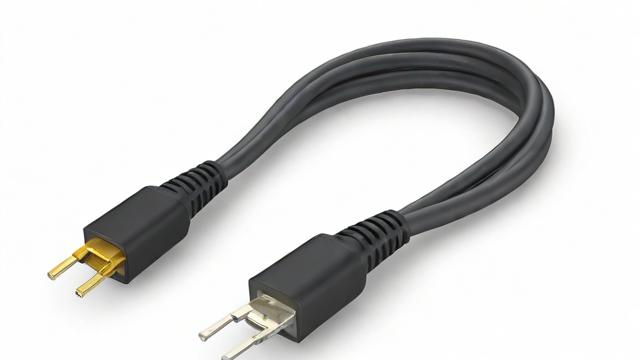Complete Guide to Reset: Master Passwords and Router Settings for Effortless Troubleshooting
When it comes to resetting devices or accounts, understanding the process is key. Whether you're resetting a password, router settings, or any other system, knowing what a reset means and why it matters can save you time and frustration. In this chapter, I'll walk you through the definition of a reset, its importance, common scenarios where resets are needed, and the different types of resets available.
Definition and Importance of Reset
A reset essentially brings a device or account back to its original state. For me, when I think about a reset, I imagine hitting a button that wipes away all the clutter and starts fresh. This action is crucial because it helps resolve issues like slow performance, forgotten passwords, or misconfigurations. Without a reset option, fixing these problems might require more complex troubleshooting or even replacing the device altogether.
In my experience, the importance of a reset lies in its ability to provide a quick solution. Imagine your router acting up and disrupting your internet connection. A simple reset can often fix the problem without needing professional help. It’s like giving your device or account a second chance to work properly.
Common Scenarios Requiring a Reset
There are plenty of situations where a reset becomes necessary. For example, if you’ve forgotten your password, resetting it allows you to regain access to your account. Another common scenario is when your router starts behaving strangely, dropping connections or slowing down your browsing speed. In these moments, a reset can be a lifesaver.
From my perspective, one of the most frequent reasons for a reset is dealing with software glitches. Let's say an app on your phone keeps crashing. Instead of uninstalling and reinstalling, a soft reset might do the trick. These scenarios highlight how resets play a vital role in maintaining smooth operations for various systems.
Types of Resets: Soft vs Hard
Not all resets are created equal. There are two main types: soft and hard. A soft reset typically involves restarting the device without erasing any data. It's like turning off your computer and turning it back on again. This type of reset is perfect for addressing minor issues without losing important information.
On the other hand, a hard reset is more intense. It restores the device to its factory settings, which means all your personal data will be wiped out. While this might sound drastic, it’s sometimes necessary when dealing with serious problems that a soft reset can’t fix. For me, performing a hard reset feels like starting from scratch, but it ensures a clean slate for better performance.
Understanding these distinctions between soft and hard resets helps you choose the right approach for your specific situation. Whether you need a quick fix or a complete overhaul, knowing the difference ensures you make the best decision.
Now that we’ve covered what a reset is and why it matters, let’s dive into the practical side of things. In this chapter, I’ll guide you through step-by-step instructions for performing different types of resets. We’ll focus on resetting passwords, router settings, and share some additional tips to ensure your resets go smoothly.
How to Reset Password Process
Resetting a password might seem intimidating at first, but it’s actually quite straightforward once you know the steps. Let’s say you’ve forgotten your email password. The first thing you need to do is visit the login page for your account. Look for an option labeled “Forgot Password” or something similar. Clicking this will usually take you to a recovery screen.
On the recovery screen, you’ll be asked to enter either your username or the email address associated with your account. After submitting this information, most systems will send you a link via email or text message. This link allows you to set up a new password securely. Make sure your new password is strong and unique—adding numbers, symbols, and a mix of uppercase and lowercase letters can help protect your account.
If you’re dealing with a website that doesn’t have a built-in recovery process, don’t panic. Many services allow you to contact their support team directly. They may ask for verification details before helping you regain access. Always keep these details handy in case you need them later.
How to Reset Router Settings
Moving on to routers, resetting these devices can solve a lot of connectivity issues. If your internet keeps dropping or feels slower than usual, a reset could be just what you need. Start by locating the small button on the back or bottom of your router. This button is often labeled as “Reset.” Press and hold it for about 10 seconds using a paperclip or similar tool.
Once you release the button, give the router a few minutes to reboot. During this time, it will restore its factory settings. Keep in mind that this means all custom configurations, like your Wi-Fi name and password, will be erased. You’ll need to reconfigure these settings after the reset is complete.
To avoid losing important data, consider writing down your current settings before performing the reset. This way, if you want to restore everything exactly as it was, you won’t have to guess any details. Additionally, check your router’s manual for specific instructions, as models can vary slightly in how they handle resets.
Additional Tips for Successful Resets
Finally, here are a few extra tips to make sure your resets go off without a hitch. First, always double-check that you’ve saved any unsaved work or backed up important files before starting a reset. Losing data during the process can be frustrating, so preparation is key.
Another tip is to read through the entire reset procedure beforehand. Whether it’s for a password or a device, understanding each step ensures you won’t miss anything critical. If you’re unsure about any part of the process, take a moment to research or consult the official documentation.
Lastly, remember that patience is essential when performing a reset. Sometimes, especially with hardware like routers, the changes won’t take effect immediately. Give the system enough time to fully reboot or apply updates before jumping to conclusions. With these tips in mind, you’ll be well-equipped to handle any reset situation confidently.














